Grosse-Île airstrip and Microsoft Flight Simulator 2020

It took the Microsoft Flight Simulator (MSFS 2020) for me to discover this landing strip on Grosse-Île. Even the Canada Flight Supplement (CFS) from Nav Canada does not mention it.
Decades ago, Canadian authorities used this island in the middle of the St. Lawrence River as a quarantine site for immigrants arriving in Canada. Many Irish people, among others, made an obligatory stop on this strip of land before being allowed to continue their journey to Canada.
At one time, a section of the island was reserved for Canadian and American researchers for their top secret research on Anthrax.The most amazing thing about reading the article is realizing that the entire production of this bacteriological weapon (439 liters) was mixed with formaldehyde and put in barrels that were dumped somewhere in the St. Lawrence River when it was decided that it would no longer be useful, as the Second World War took a turn in favor of the Allies. It seems to me that formaldehyde does not prevent barrels from rusting, but hey… back to the point.
Today, tourists can visit Grosse Île and the Irish Memorial National Historic Site during the summer months using the services of Croisières Lachance, located in Berthier-sur-Mer.
Where is Grosse-Île located? In the province of Quebec, a little east of Quebec City. It is one of the many islands that you can fly over once you have left Île d’Orléans behind. Below, a screenshot from Google Maps.
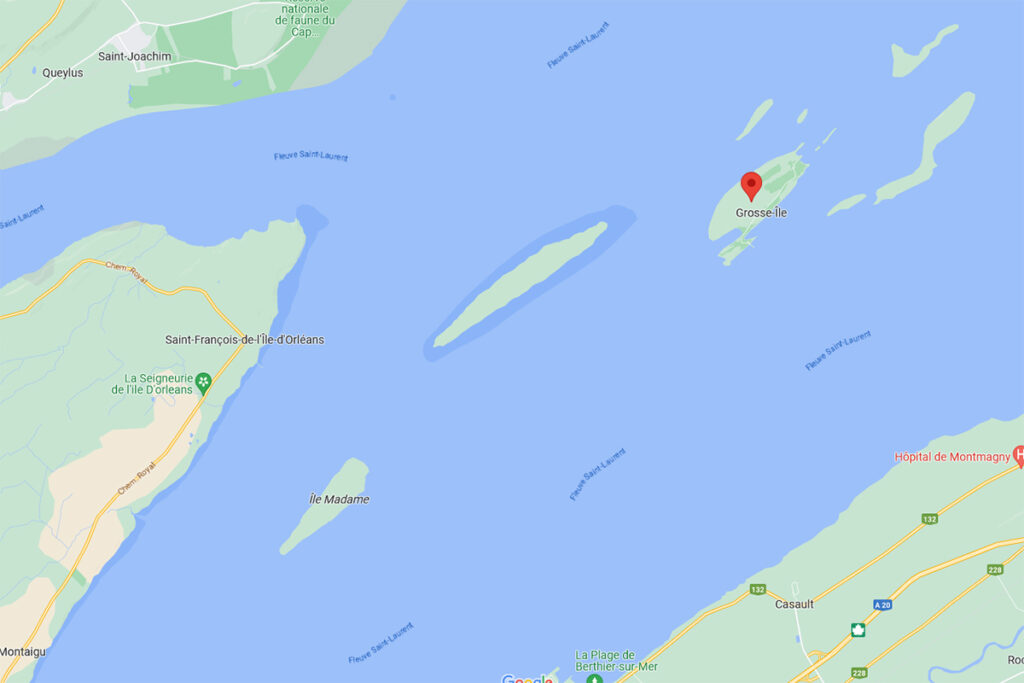
The satellite image below clearly shows that this is not an invention. Microsoft designates this runway as CYMN Montmagny: a mistake that one can easily live with, since by giving an official code to this Grosse-Île runway, the pilot can use it as a navigation point in his GPS.
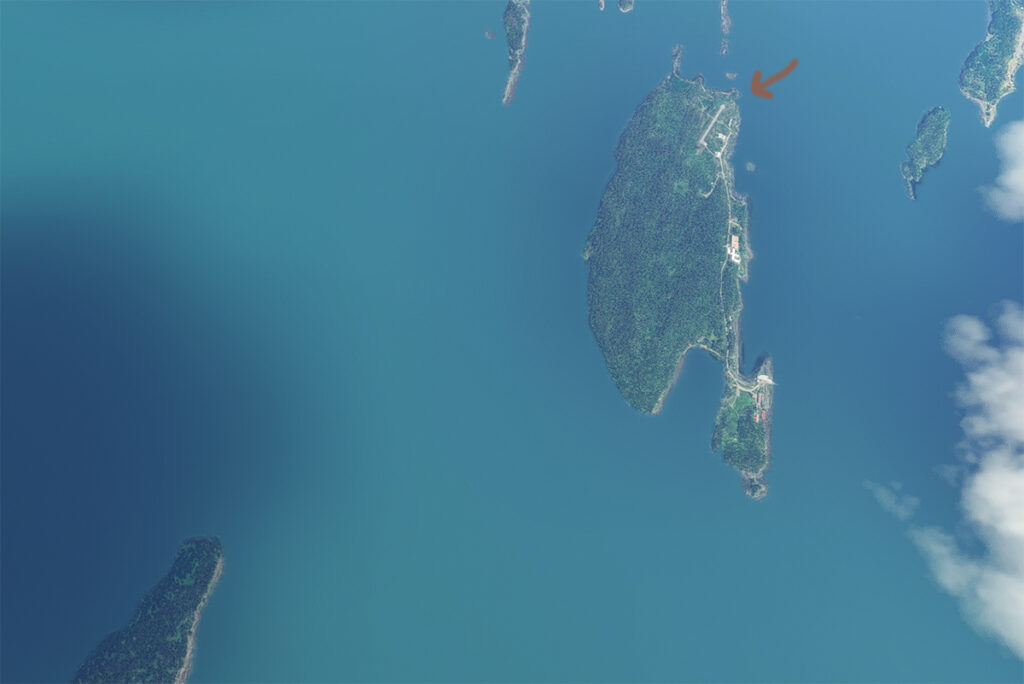
So, let’s use a small Cessna in US Coast Guard colors to make a virtual flight from Quebec City airport (CYQB) to Grosse-Île (CYMN). It was a bit chilly on this February day in Quebec City, so I decided to transport us to July for this flight, adding a few cumuliform clouds in the process.
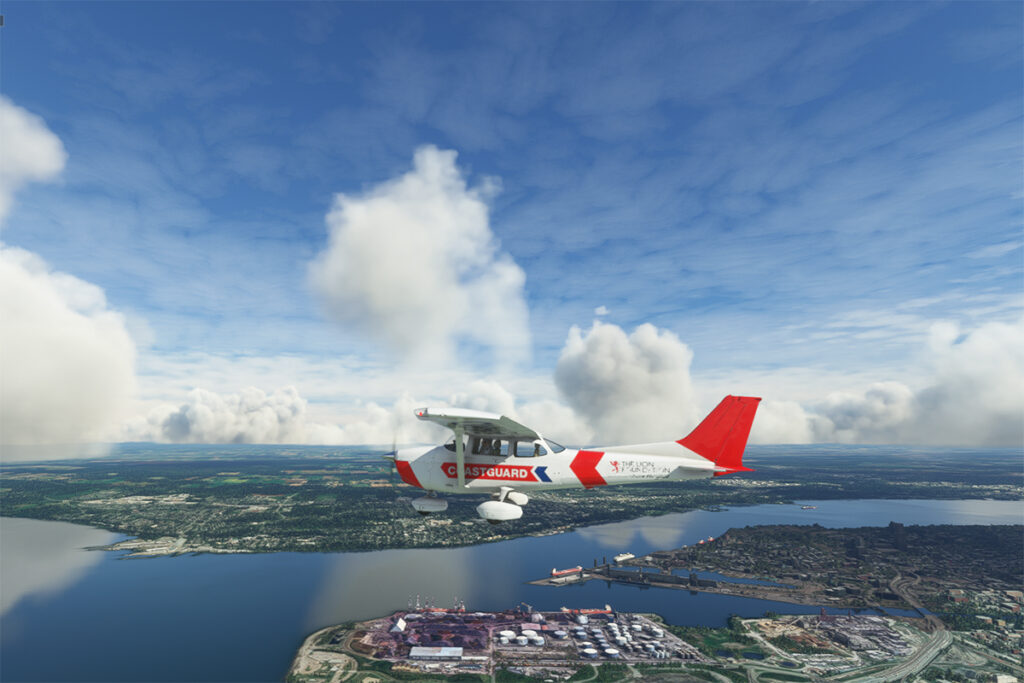
This short flight will allow us to fly over Île d’Orléans, Île Madame (owned by Laurent Beaudoin, former major shareholder of Bombardier), Île au Ruau (purchased in 2019 by the rich boss of the Gildan empire) to finally arrive at Grosse-Île.
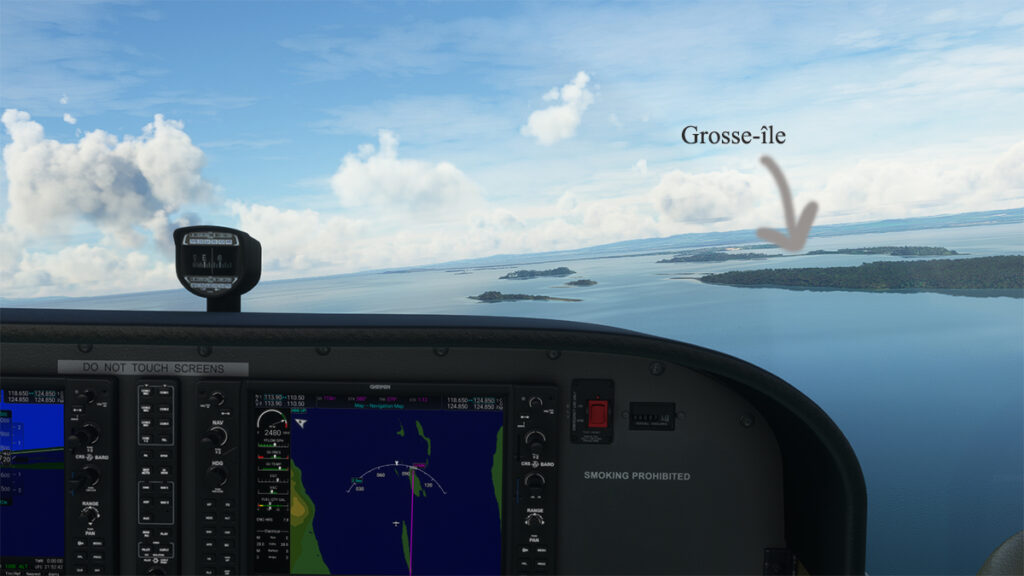
The picture below shows the aircraft on a right base for the Grosse-Île runway. I do not know the official dimensions of this dirt airstrip, but it can easily accept a Cessna aircraft such as ours.
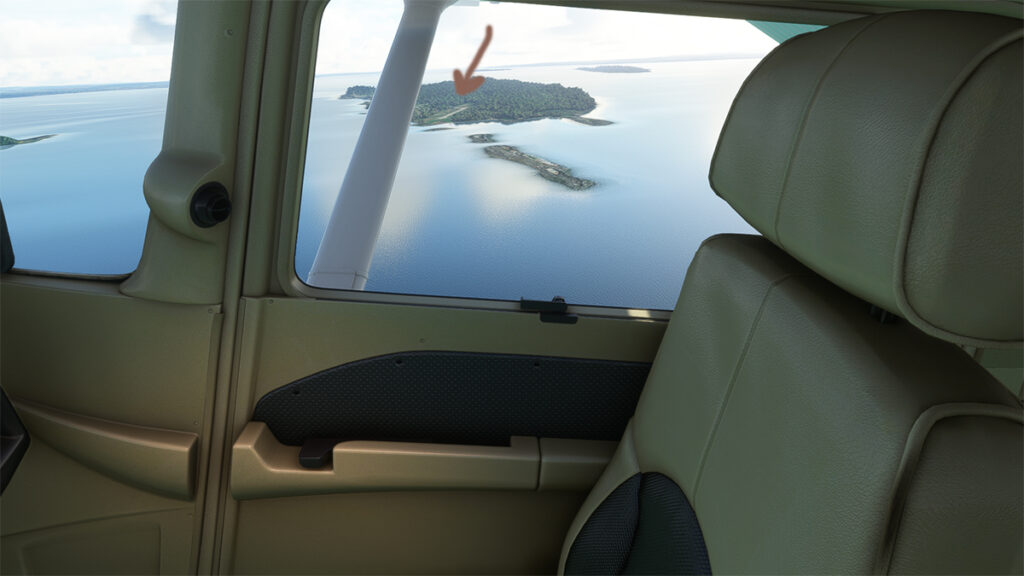
Below, the aircraft is on final for the runway.
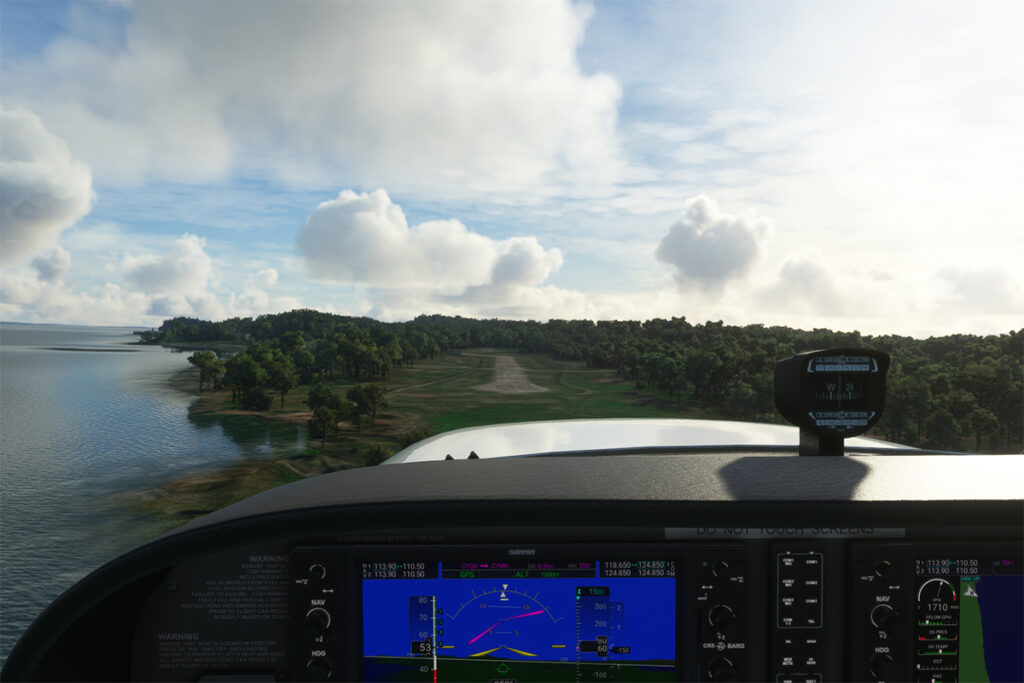
A final screenshot shows the Cessna taxiing down the runway after landing. As you can see, the runway can accommodate much larger aircraft. If you want to make a real flight to this island, find out beforehand about the condition of the runway and the restrictions surrounding its use by visiting pilots.
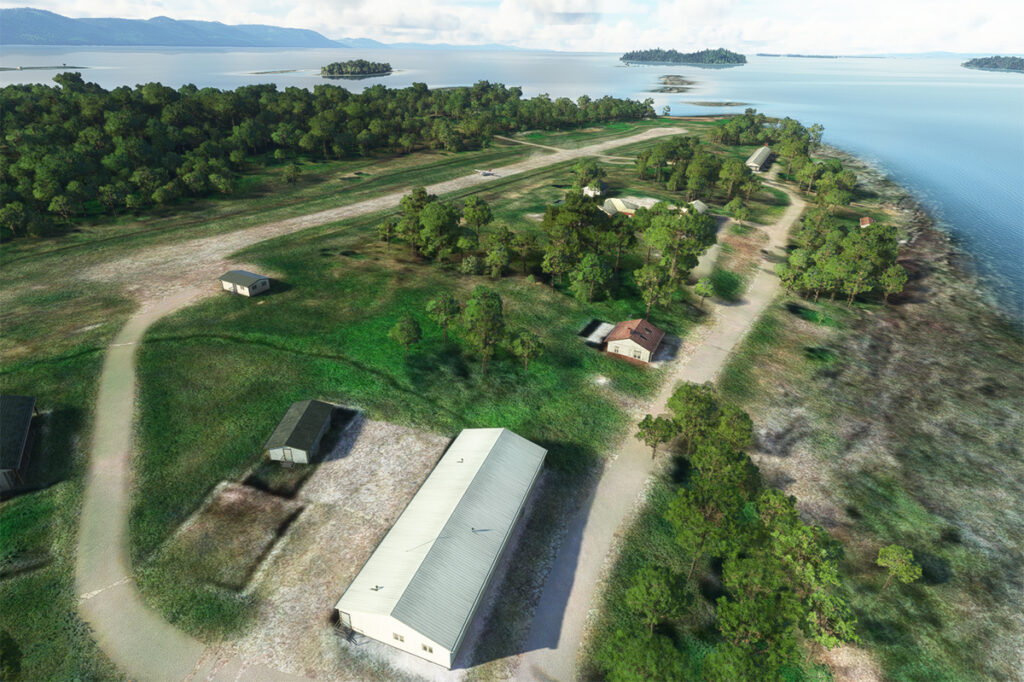
Virtual flight in Quebec with MSFS 2020
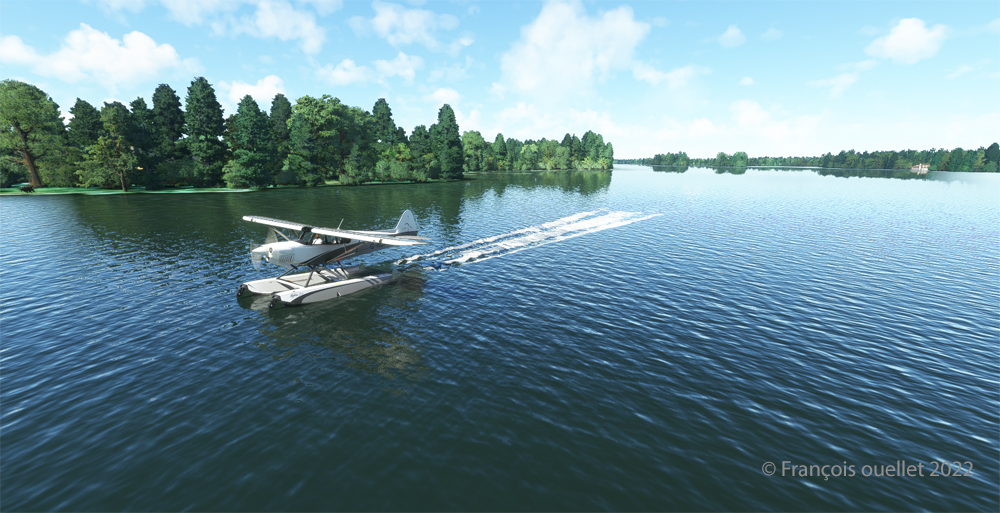
Today’s flight is part of my blog’s standard virtual flight category. The take-off is from the Mille-Îles River in Quebec. There will be a touch and go at Mirabel (CYMX) and a flight over Quebec and Ontario to the Cascades hydrobase (CTY3).
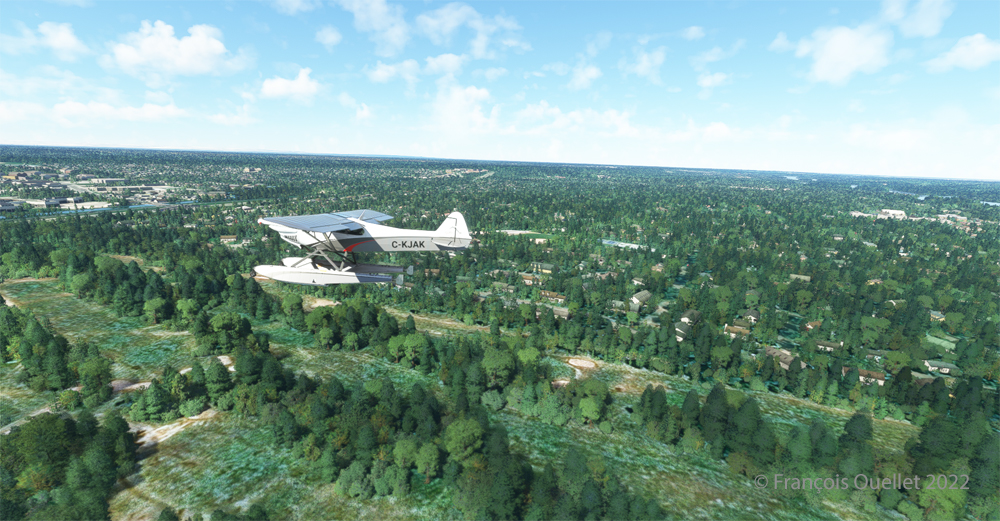
Flying at low altitude towards Mirabel airport, for a touch and go.
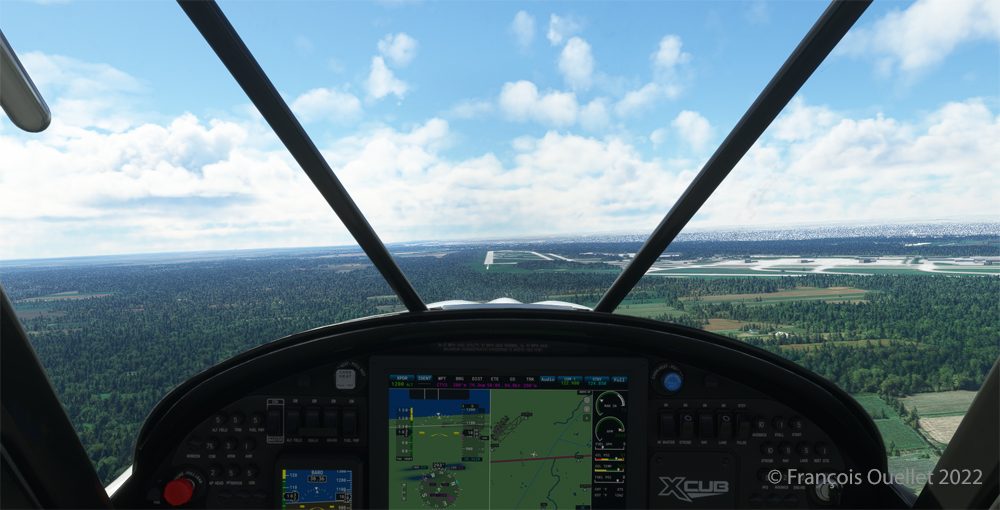
One of the CYMX runways can be seen straight ahead. If a virtual pilot does not find the runway long enough to do a touch and go, then a refresher course is in order.
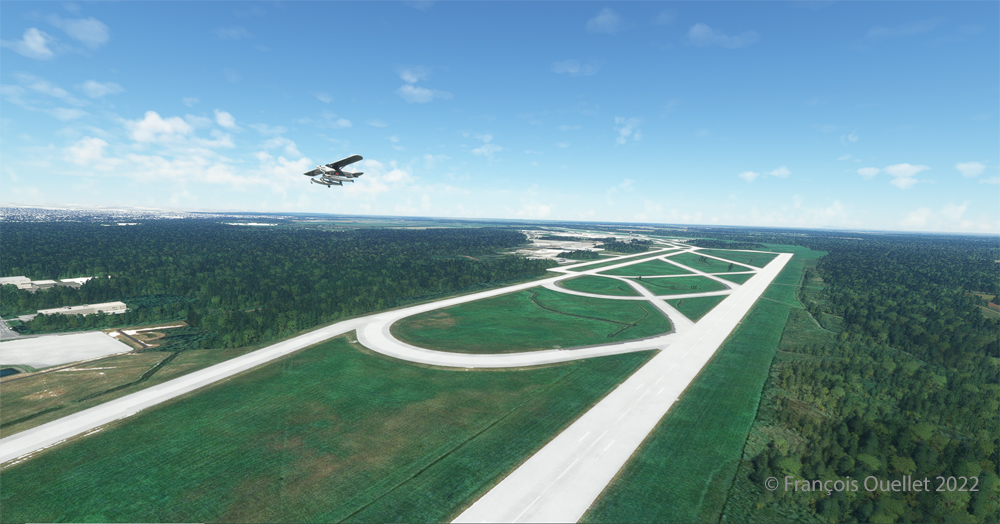
Takeoff from Mirabel. This is the advantage of an amphibious aircraft; you can land anywhere.
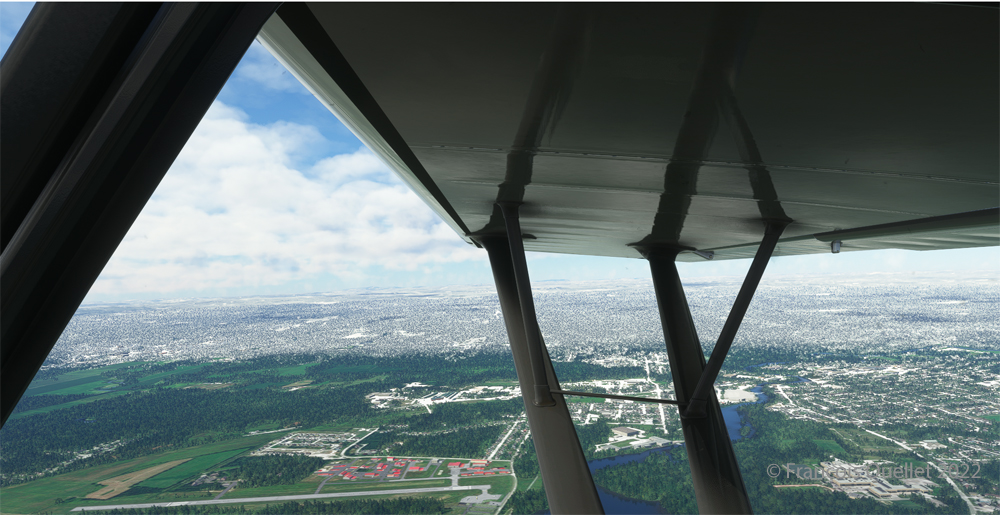
The Lachute airport (CSE4) is visible (buildings in red in the foreground). Flying in April in Quebec allows to notice the demarcation between the still white landscapes (the snow persists) in the north and the areas where everything has already melted.
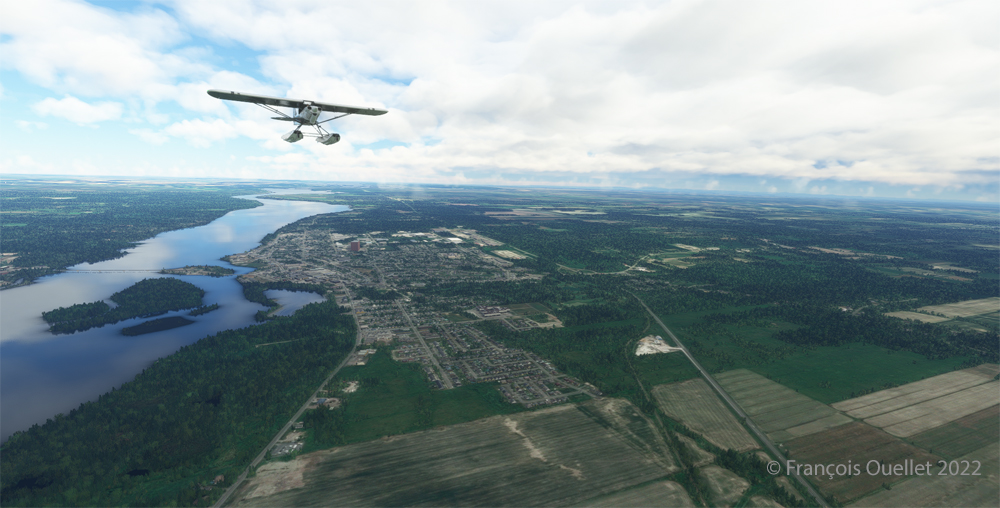
The flight continues to the Cascades waterbase (CTY3). The Ottawa River separates Quebec from Ontario. The aircraft is currently over the town of , Ontario, with Hamilton Island on the left.

The screenshot above shows the very realistic effect of the virtual landscape, both in terms of the virtual weather, the multiple color tones of the ground and the shading on the ground and on the aircraft caused by the breaks between the clouds.

Above Parc national Plaisance, a Quebec property.

Descending for 1500 feet. Near Gatineau, the weather conditions deteriorate slightly. But it will be short-lived.
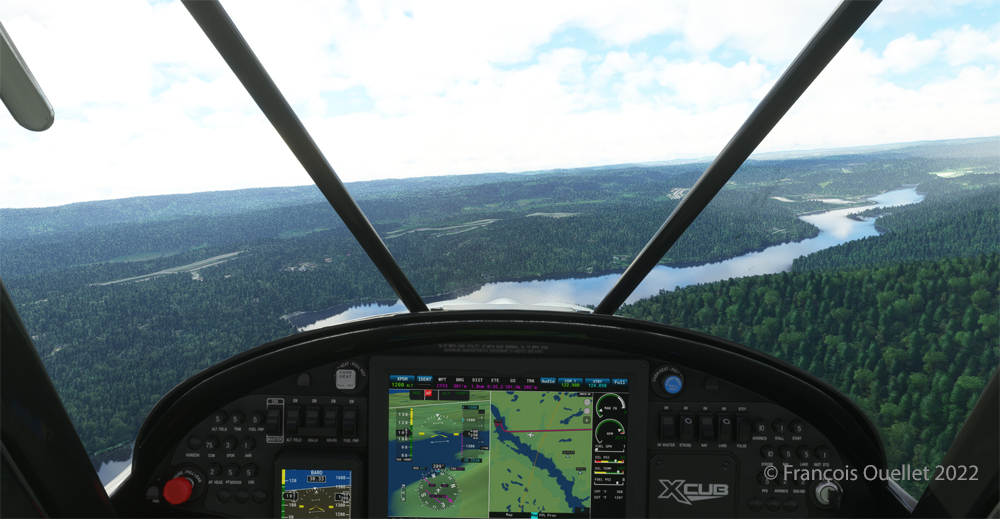
Right turn for a water landing on the Gatineau River. The destination is in sight.

The plane progresses slowly towards the hydrobase.
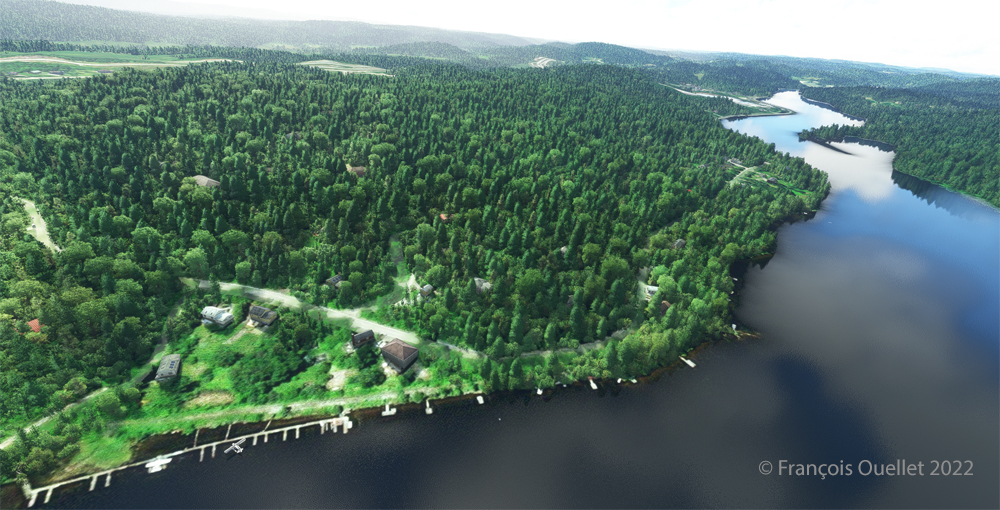
There is not yet a virtual waterbase worthy of the name for Cascades under Microsoft. At low altitude, the virtual pilot notes that he is only flying over a photo with aircraft footprints. An aerial view shows the CTY3 hydrobase.
Those who wish to repeat the experience will find the ride quite interesting.
Flight around Key West with MSFS 2020
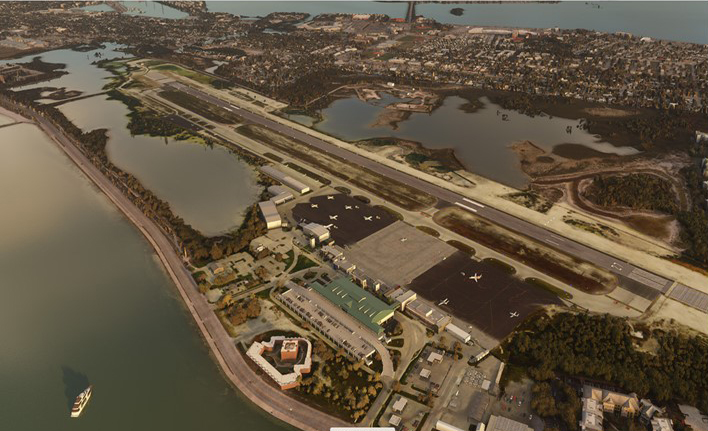
This is the Key West Airport (KEYW) in Florida, as reproduced for flight simulation by FSDreamteam for the Microsoft MSFS2020 flight simulator.
There is a clear advantage to acquiring this virtual airport rather than using the MSFS2020 airport. Indeed, the FSDreamteam KEYW airport doesn’t come alone: the company offers two other sites in accompaniment and for the same price: Fort Jefferson and the Loggerhead lighthouse.
A small virtual flight with a Cessna C-172 on floats allows you to fly over these sites and land on the water when appropriate.
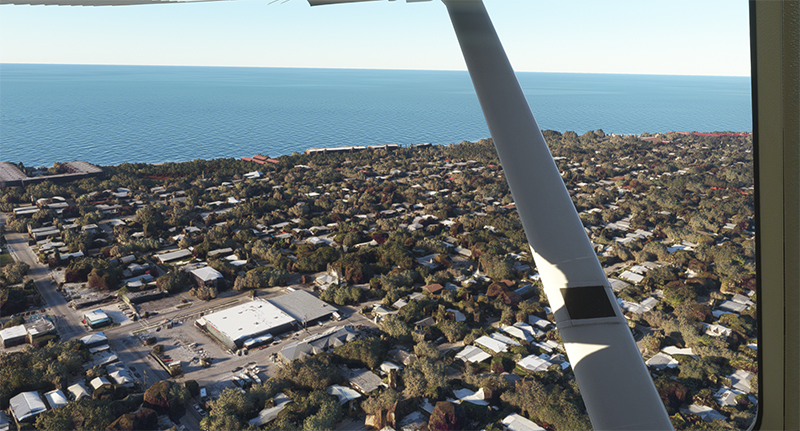
The Cessna takes off from Key West under ideal weather conditions.
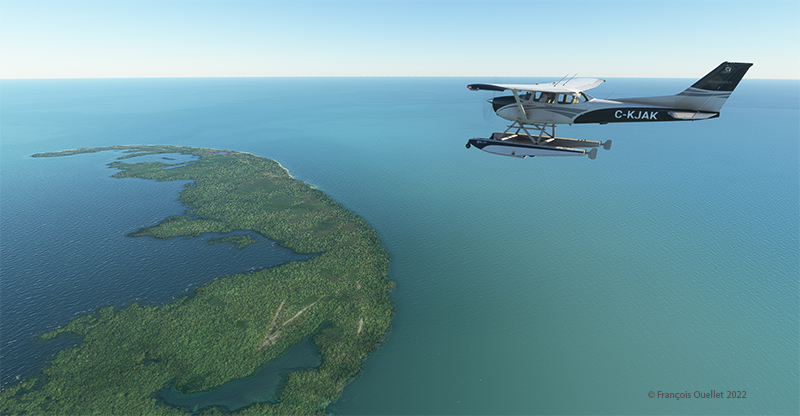
Shortly after takeoff and established at 3000 feet, we fly over the Key West National Wildlife Refuge.
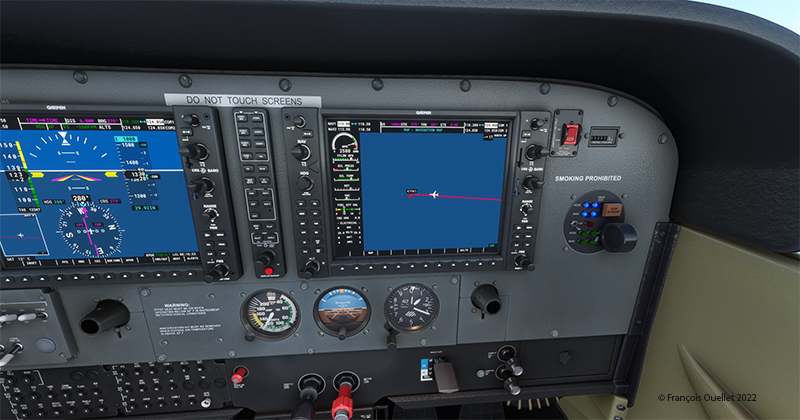
The Garmin G-1000 allows a stable flight during screen captures.
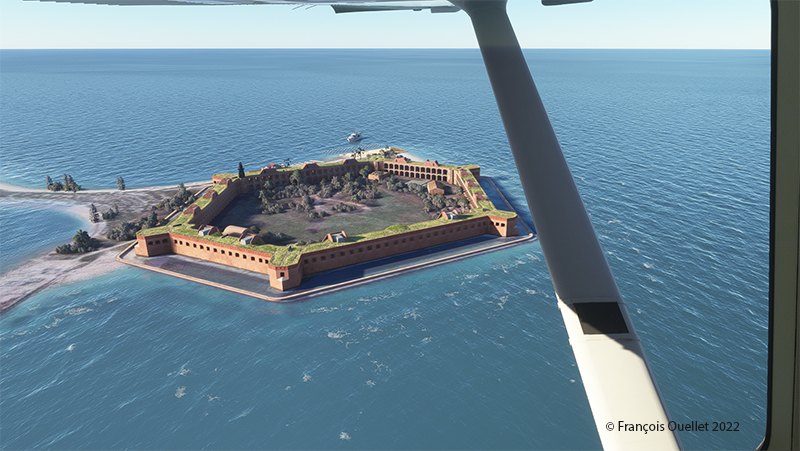
This is Fort Jefferson photographed as the Cessna flies at about 1500 feet ASL. The winds have increased slightly and foam is becoming visible on the waves.
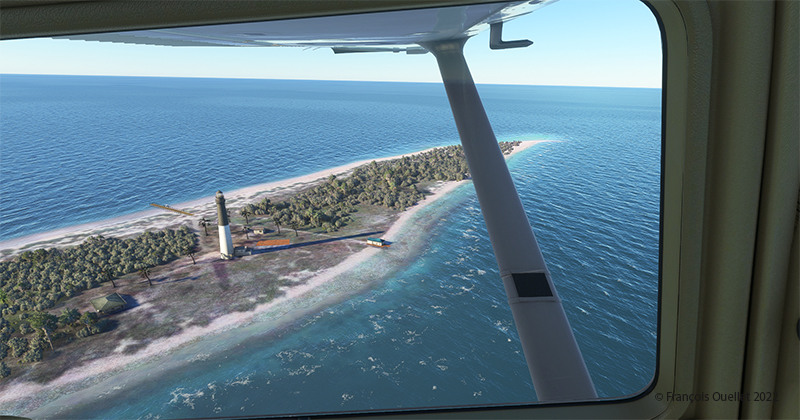
A little further along the flight path is the Loggerhead Lighthouse. The beach is beautiful and gently sloping. It will be possible to do a water landing, put the landing gear down while on the water and then park on the beach.
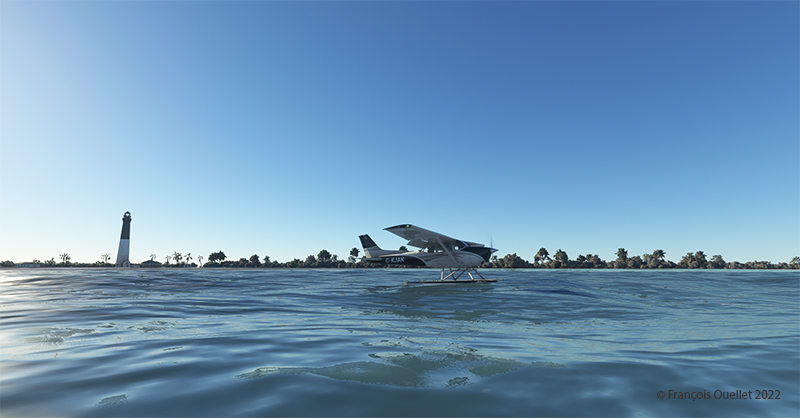
The landing is done without too much difficulty.

With a little engine power, it is possible to get out of the water and park on the beach for a while. After turning off the engine, the MSFS2020 flight simulator allows the pilot to listen to the sound of the waves and wind in a realistic way. If there are birds in the area, it will also be possible to hear them.
For those who want to repeat the experience, it is only a matter of programming the starting point in MSFS2020 as KEYW and the destination KYW1 (Fort Jefferson). Once through Fort Jefferson, continue straight for a few minutes and you’ll arrive at the Loggerhead Lighthouse. Take a few moments to relax and listen to the waves before taking off again…!
From Chile to the Rothera research station, Antarctica, with the BAS Twin Otter
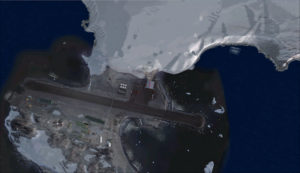
For this flight, you will need the Antarctica X flight simulation software made by Aerosoft.
The maintenance of BAS Twin Otters and their Dash-7 is done in Calgary, Canada, and head to Antarctica during the austral summer, between October and March. So if you want to try a flight simulation with a Twin Otter or a Dash-7 from Chile to Antarctica, pick one of those months as it is more realistic.
Since it would be a bit long to make all the virtual flights from Canada to Antarctica, I chose to do the last three legs to see what the landscape looks like.
A Twin Otter is normally approved for a maximum take-off weight of 12,500 pounds. But with skis weighing 800 pounds and additional fuel required to fly longer legs, BAS (British Antarctic Survey) has arranged to have their Twin Otters approved at 14,000 pounds. Even at this weight, the aircraft could still operate on one engine.
First, the aircraft departs La Florida airport (SCSE) in Chile, after a mandatory fuel stop before its next destination, the El Tepual de Puerto Montt airport (SCTE), also in Chile.
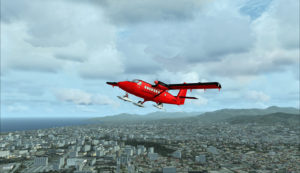
This virtual flight with the Twin Otter last about 4:25 hours (696 nm) with a heading of 185 degrees.
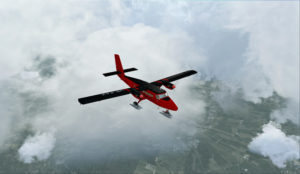
For the screen captures, FTX Global, FTX Vector and Pilot’s FS Global 2010 were installed. Orbx has also reworked the original El Tepual de Puerto Montt airport to include some people, aircrafts and new buildings. It makes for a more interesting destination.
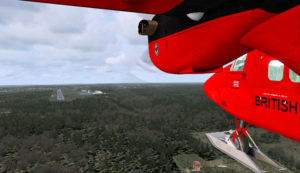
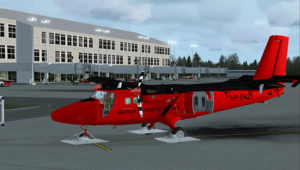
The next flight is from the El Tepual de Puerto Montt airport (SCTE) to Punta Arenas (SCCI), both in Chile.
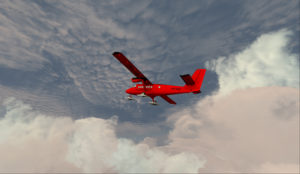
This flight, made low across the Andes, absolutely requires good weather. You will have to climb to 17,000 feet to make the direct route between the airports.
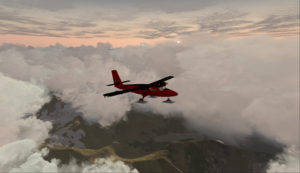
There are often spectacular views available to the virtual pilot. Yes, the BAS Twin Otter is flown by only one pilot, but there is always somebody else accompanying him.

Don’t forget to lean the mixture during the climb. Also use some additional oxygen (!!) if you don’t want to start singing and flying in circles after a while. Again, pay attention to the mixture during the descent, considering that you will be losing close to 17,000 feet.

The Punta Arenas airport, straight from FSX, is not an interesting airport to look at. It is a very bare airport, with just a single building and a VOR.
But since the BAS pilot do that mandatory leg just before heading to Antarctica, I chose not to change the route. The general direction for the flight to Punta Arenas was 164 degrees and the duration approximately 4:28 hours. You can obviously accelerate the process once the aircraft is established at its flying altitude.
The last flight is from Punta Arenas, Chile, to Rothera, Antarctica.
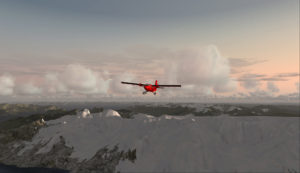
The Twin Otter will take between six and seven hours on an average heading of 162 degrees to cover the distance between Punta Arenas (SCCI) and Rothera (EGAR).
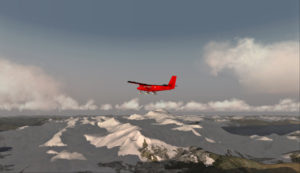
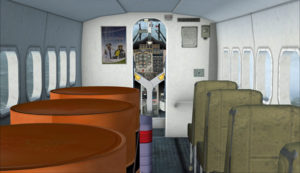
The runway at Rothera is made of gravel and is 2953 feet long. That is plenty for the Twin Otter and the DASH-7. Before you make the flight, go into the aerosoft/Antarctica X file in your flight simulator and click on the “LOD 8.5” option (the default is at LOD 4.5). It will give you much better details when you are approaching Antarctica.
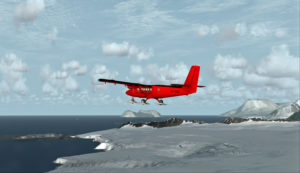
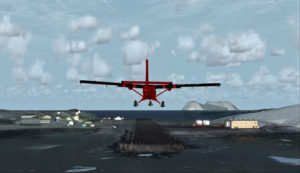
The Airliner World magazine had an excellent article on the BAS operations in Antarctica in its March 2017 edition. It included plenty of interesting pictures and detailed explanations on what is expected from pilots and personnel working for BAS. I compared the Rothera virtual airport with the real one through the available pictures in Airliner World and was pleasantly surprised with the level of accuracy of the details.

The BAS always prepares itself for the worst: “[It] carries parts valued at around $5m, including a replacement engine for each aircraft, spare props and undercarriage components”.
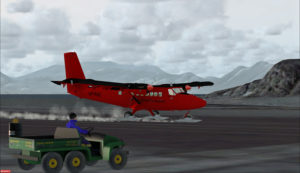
“A new development for the Air Unit has been its work with the RAF, using C-130 Hercules transports to airdrop supplies into the field. They fly from Punta Arenas and drop fuel to support our science programmes on the Ronne Ice Shelf. […] It is all part of their training system and the accuracy they drop to is very impressive. They might drop 250 drums, think how many Twin Otter trips that would have been for us (48 or more than 400 flying hours)”.
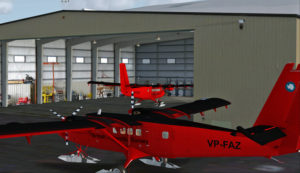
Aerosoft has made an excellent job in replicating the buildings in Rothera, BAS’s main research station in Antarctica. The biggest hangar can accommodate three Twin Otters and a Dash-7 altogether.
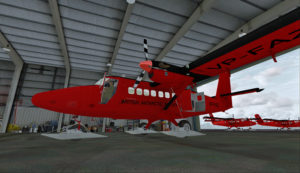
When your flight is over, do not forget to change the settings back to LOD 4.5 for Antarctica in your aerosoft/Antarctica X files.
A DC-3 on skis and the Homer (PAHO) ice runway in Alaska
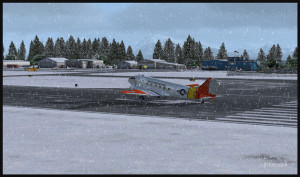
If you feel like attempting a virtual landing on an ice runway, an opportunity is offered by ORBX through their Homer (PAHO), Alaska virtual airport. For the flight, I used the FSX platform but it could have been also done under P3D.
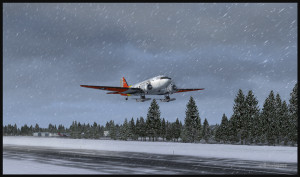
The ice runway is just a short distance away from the regular Homer asphalted runway. The DC-3 is an excellent aircraft for the task since its approach speed is very low and it is one of the few virtual aircrafts equipped with skis.
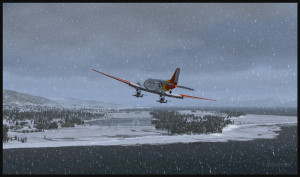
If you want to try that flight, make sure to adjust the flight simulator configuration settings so that the Homer ice runway option is activated, otherwise you’ll end up under water…
In order to add a bit of challenge as well as winter realism, you can add a bit of crosswinds or some snow using the standard « heavy snow » option in FSX. The program PrecipitFX helps a lot if you are looking for a better definition of precipitations, be it snow or rain. For this flight, the Cumulus X program was also activated.
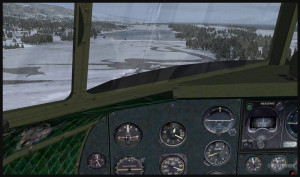
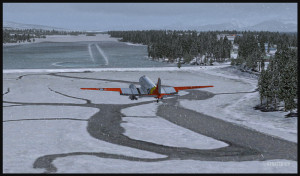
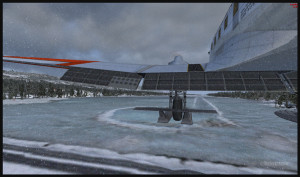
The short flight proved to be an interesting experience, since the runway was narrow and there were some crosswinds. I thought that it would be very slippery but it was not the case. Maybe one day Orbx will work at modifying the flight simulation platform and add a CRFI (JBI) index of .40 or less to increase the difficulty in slowing down and controlling the virtual aircraft?

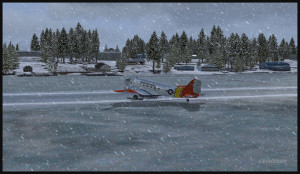
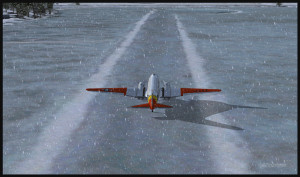
As this flight is not a super though exercise, I have placed it in the “standard virtual flights”, in the flight simulation section of my website.
Have fun trying this one! Later on, I’ll present another ice runway located on Antarctica, which virtual scenery was made by Aerosoft. Even the C-17 Globemaster III is approved there…
A serious training session is mandatory with the Pilatus PC-21 before attempting a landing in Fairoaks
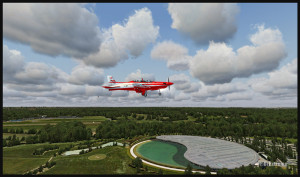
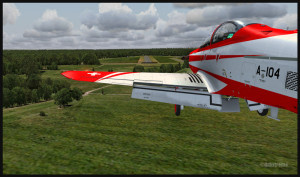

The IRIS Pilatus PC-21 Pro Training Series is a high performance aircraft. It is equipped with a five blade graphite propeller as well as a Pratt-Whitney PT6A-68B engine able to develop 1600 SHP. Until the PC-21 was created, there were only jet aircrafts that could provide such performance when it comes to pilot training. The PC-21’s maximum airspeed is 370 knots, its service ceiling 38,000 feet and it can climb at a rate of 4000 feet/minute.
The above sequence of pictures represents a familiarization flight with that aircraft, before trying to attempt to land in Fairoaks. I have included this flight under the “flight simulation” section of the site, under “standard virtual flights”.
The takeoff was done from Southampton and the route included Shoreham, Gatwick, Heathrow to finally end in Fairoaks. Along the route, different exercises were practiced like slow flight, inverted flight and other manoeuvers that allowed to learn the behavior of the machine under all kind of configurations.
IRIS created that virtual Pilatus. ORBX is responsible for the Southampton, Shoreham and Fairoaks virtual airports, as well as sceneries generated by their well known Global, Vector, Open LC and Trees HD products. FSX was used for the flight. Clouds were generated by REX and CumulusX. For an even more realistic experience, UK2000 virtual airports like London Gatwick and London Heathrow could have been used since they are of excellent quality.
Beware of the approach in Fairoaks. There are trees near the threshold of the runway and the landing surface is relatively short, measuring only 813m (2667 feet). Flying an aircraft equipped with such a powerful engine and whose stall speed approximates 150 kmh with flaps and gear down will require much attention on the approach. It will be the difference between a successful landing or having your name in the first page of Fairoaks local newspaper the next day.
Good luck!
Just in time for a BBQ in Bear Gulch!
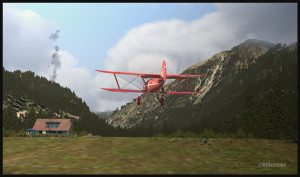

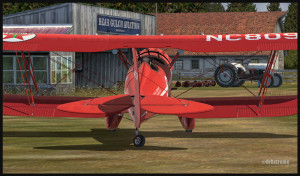
Hi,
I’ve just added a new VFR flight in the “flight simulation” section, under “standard virtual flights”. An Alabeo WACO takes off from Cushman Meadows, heads south-east towards the Skokomish Reservation, then flies over the Bremerton airport to the north-east and ends up landing at the Bear Gulch aerodrome, just in time for a BBQ. This was done using FSX. The first part of the cross country is for a starting virtual pilot but the last part requires a bit more experience.
It is a more demanding experience than what is normally found in the “standard flights” section, since it involves a final landing at Bear Gulch. The runway at that airport is only 1411 ft long, and quite narrow. So you have to plan your approach carefully. A little wooden bridge is part of the runway! Since the flight is done in nice VFR conditions and does not involve engine failures or using a really fast aircraft arriving on a short runway, I decided that the “standard virtual flights” section was more appropriate. Still, it is not an easy approach.
Cushman Meadows (KCMW) and the Bear Gulch (WA38) runways do not exist in real life but am I ever glad Bill Womack took the time to create them. His site can be found under Iblueyonder. The screen captures show both airports and the PNW region sold by ORBX. If you want nice shadows on the ground while not using P3D, just get CumulusX and set the season to summer, with scattered clouds in mid afternoon.
Some guests have already arrived in Bear Gulch. You will see the smoke rising from the BBQ being prepared while you are on short final. The guests will certainly be taking pictures of your approach, as you are flying a vintage aircraft. So, if there was ever a time to do things correctly, now it is!
Have fun!
Flight simulation: VFR practice at the Montreal Pierre-Elliott-Trudeau international airport, with the help of Fly Tampa Montreal

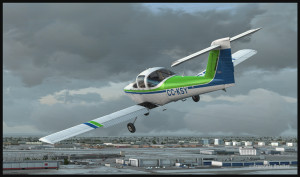
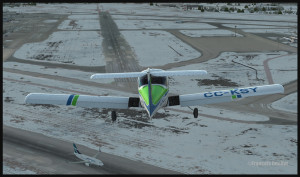

All student pilots must practice touch-and-goes for hours. FlyTampa Montreal scenery for FSX, used jointly with MyTraffic2013 software and real weather makes for a realistic exercice for anybody who knows the metropolitan area around Montreal.
A small aircraft like the ALABEO Piper PA-38 Tomahawk is a perfect choice. I chose a left hand circuit for runway28 since it allows a nice view of the terminal when taking-off or landing. Fly Tampa Montreal allows the virtual pilot to see local landmarks when flying around the airport, like the olympic stadium, the St-Joseph’s Oratory and Place Ville Marie.
On downwind 28, if you fly during winter, you will be able to see that only parts of Lac St-Louis are frozen. On left base, Air Canada and Bombardier very well rendered buildings are visible. If you had landed on runway 24L, you would have seen other well known company names posted here and there on the surrounding buildings. That is a really well made scenery.
The use of My Traffic software allows aircraft movements around the airport during your exercice; that makes the experience even more interesting. You will also be surprised by the realism in the depection of the snow patches along the runway sides when you are on the approach. So, have fun with this easy exercice in a really interesting setting made available by Fly Tampa Montreal.
The Boeing B-52 on a flight from Montreal Pierre-Elliott-Trudeau airport towards Anchorage, Alaska
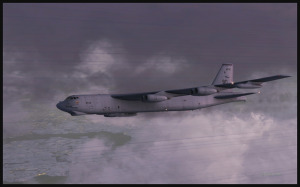
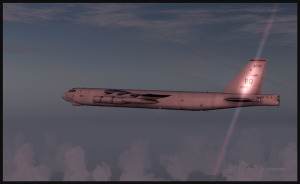
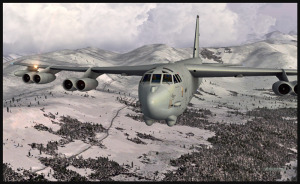
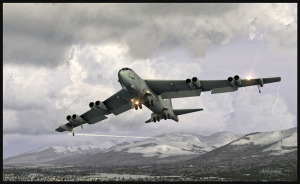
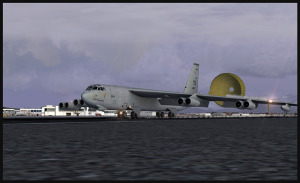
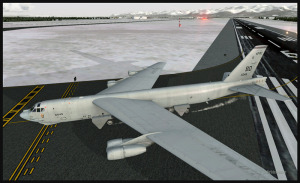
The B-52 is a Captain Sim creation, Montreal is made by FlyTampa, and the remaining scenery is designed by ORBX. Here are few basic informations for those of you who would be tempted to try a flight immediately after the download is completed. For the takeoff: pitot heat, 100% flaps down, YAW SAS Switch Engage, stabilizer trimmed, full throttle within four seconds, climb between 1500 and 2000 ft/min. The climb with flaps down is done at 180 kts. Adjust the thrust so that you have time to bring the flaps in totally; use 230 kts as maximum for zero degree flaps. Once in flight, brake to stop the wheels rotation then bring the gear up (although not before reaching 1000 ft agl).
For a normal descent: (note: keep 20 kts in surplus of the proposed speed when the aircraft is turning). The descent is done at about 240 kts, with airbrakes 4, gear down, throttle to idle. À 220 kts, you may start applying flaps (they take 60 secondes to be fully extended). Once in downwind, use153 kts with airbrakes 4 (for 225,000 lbs). No more than 30 degrees turns. The rollout is done at no more than133 kts.
The touchdown with airbrakes full up is done at 110 kts IAS. The drag chute is then deployed (never above 135 kts). Keep a slight angle only, with the rear wheels touching first. When taxiing, turn the YAW switch and the airbrakes to “OFF”. Those are only basic infos. By the way, when the drag chute is deployed, you will not see a difference in the breaking distance; the chute is there only for “graphic” reality. Have a good flight!
The Global Hawk RQ-4B in flight at high altitude over Canada toward the Williams Lake airport
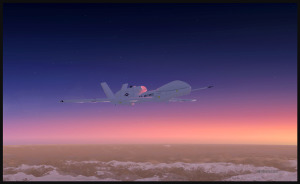
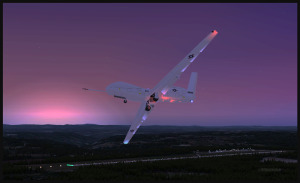

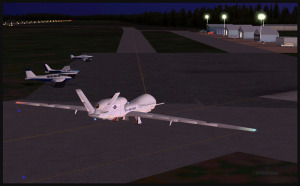
If you do that flight during the evening, you will benefit from a very nice light. The rate of climb is approximately 500 feet/minute and the maximum altitude is above 60,000 feet. You will need about two hours to reach an altitude that allows you to obtain the same view as the one is the pictures below. The Global Hawk is available as a free download. It is not very demanding when it comes to flying. The virtual program was built by an engineer who was also working on the real Global Hawk. More informations are available regarding the characteristics of the Global Hawk with the downloaded file. Have a good flight!
Glider exercice over Monterey, California
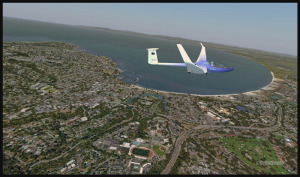
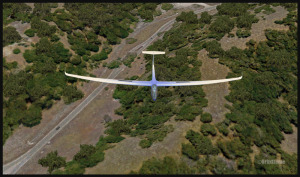
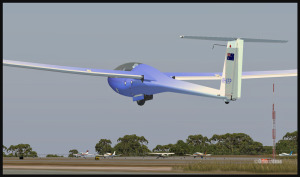
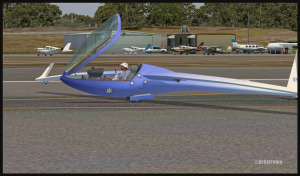
Here is a great opportunity to become comfortable with a glider, which will prove useful for tougher exercices in the “challenging virtual flights” section. Choose the glider that you like (I used the standard one offered by Microsoft FSX) and also a well detailed field over which the flight will be done (in the flight below, the scenery is made by ORBX). Position the glider on a runway or grass strip and press CTRL+SHIFT+Y. You will see the tow plane appear and in no time you will be airborne.
During the climb, make sure that you follow the plane correctly, otherwise the link will be cut between the glider and the plane when you are not totally ready, like in real life. When you have sufficient height, cut the link between your glider and the plane by pressing SHIFT+Y. Take some time to admire the scenery, then plan your arrival back to the airport. It is an excellent exercice to learn how to evaluate approaches correctly without an engine. When you will fly a plane, you will greatly benefit from this experience. Have a good exercice and profit from the view!
The Phenom 100 on a flight from Redding, California to Sekiu, Washington State
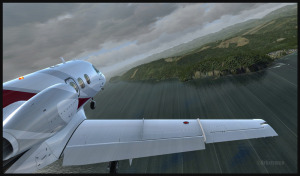
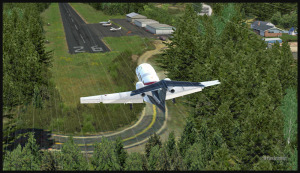

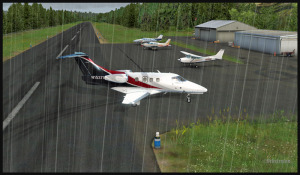
You can expect a nice flying experience when you do this flight with the Phenom 100. Here are the runway dimensions at Sekiu, an airport made by ORBX: 2997 feet long by 50 feet large. Landing distance: 2722 feet when with maximum load. Since you will have used a considerable amount of fuel for the flight, the total weight will have diminished. Watch for the trees on final for runway 26. The bonus: if the flight is made using ORBX airports, you benefit, on takeoff as much as on landing, of an excellent quality scenery that reproduce the reality to a very high degree. In order to ease your work, here are some useful informations regarding the Phenom 100 when on the approach: (Flaps Up/0: 150 Kias, flaps Up/1: 140 Kias, flaps DN/2:120 Kias, DN/3: 115 Kias). For the landing, set “Yaw Damper” to “off”.
Stall speed (Kias) (MTOW): banking angle 0=100, 15=102, 30=108, 45=119. A banking angle of 60 degrees will necessitate a speed of 141Kias. Here are the numbers for a maximum weight landing: Banking angle/Flaps 3/Full flaps: 0/81/77 15/82/79 30/87/83 45/96/92 60/115/109. If you wish to takeoff from Sekiu with the Phenom 100 and the aircraft is at MTOW, the runway will not be long enough since 3125 pieds are needed. Good luck and have a good flight!
A VFR flight with the Cessna 337 around Squamish, British-Columbia, Canada
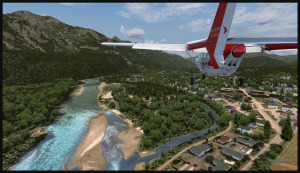

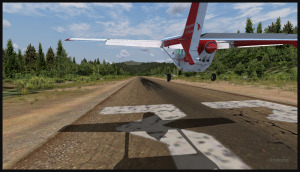
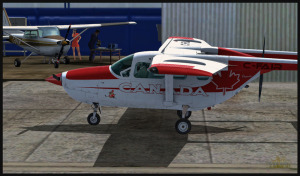
The Cessna C-337H is an excellent aircraft for this VFR flight around the very beautiful city of Squamish, British-Columbia. This scenery, developed by ORBX, holds many expertly crafted points of interests. It is also worth visiting the city by helicopter, so that you can slow down over the most interesting sites. Visit Squamish during different seasons using live weather (via internet) for a different experience every time.
2 replies on “Standard Virtual Flights”
Bonjour,
I discovered your website when I googled a search for a list of ORBX freeware airports. Thanks for this and your other information. If you have a mailing list, please include me.
Sherman Kaplan
Highland Park IL
Thanks Sherman, I am glad you found my website. I don’t have a mailing list, but I am here for the long run, without publicity of any kind. I am waiting for the new MS2020 and what Orbx will do for those who already have a lot of FSX airports. Then I will possibly make a move towards the MS2020, as the old FSX has a bit of trouble to deal with huge scenery and complex aircrafts! Anyway, glad you stopped by!